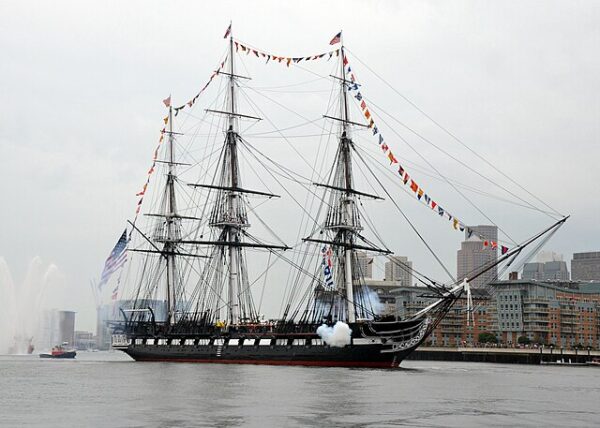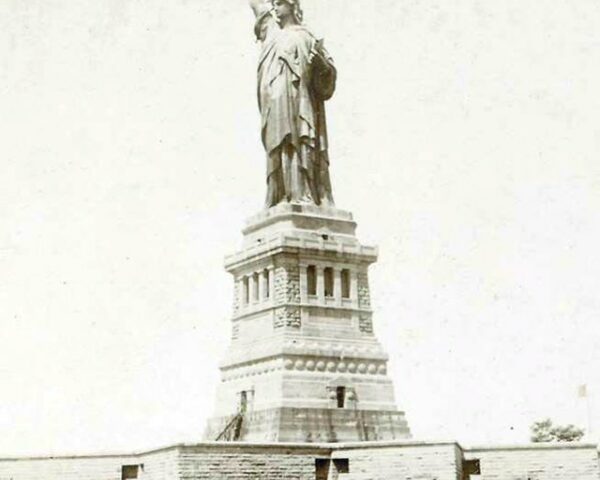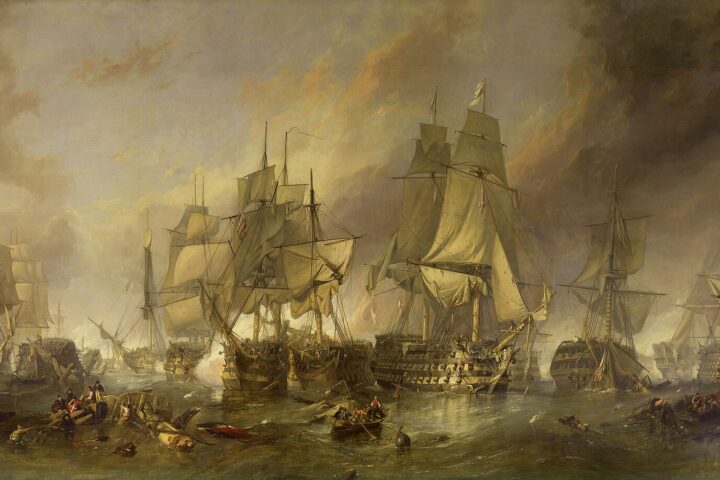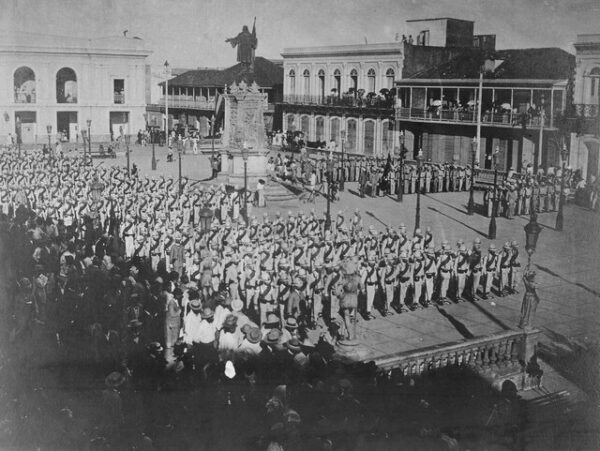On the morning of October 21, 1797, the people of Boston gathered along the harbor to watch a ship—three years in the making—slip into the Atlantic. The 44-gun frigate USS Constitution rested poised on the greased ways of Edmund Hartt’s North End shipyard, its black hull gleaming against the pale autumn light. When she finally lurched forward and met the salt water, a roar went up from the crowd and cannon fire rolled across the harbor. What they witnessed was more than a launch. It was the birth of a symbol—a vessel that would carry the confidence and endurance of a young republic onto the world’s oceans.
The Constitution had its origins in anxiety and ambition. Only a decade after independence, the United States remained vulnerable, its merchant ships prey to French privateers and Barbary corsairs. In 1794, Congress resolved to meet these threats by creating a navy worthy of its sovereignty. The plan called for six new frigates—powerful enough to defeat any vessel of similar size yet swift enough to evade the great ships of the line. Naval architect Joshua Humphreys, a man of unorthodox vision, designed them with unprecedented length and strength, built from Southern live oak so dense that an axe would rebound from it. The hull, double-planked and braced with massive ribs, could withstand punishment that would splinter ordinary ships.
Construction in Boston fell to shipwright Edmund Hartt, whose yard buzzed with activity through the mid-1790s. Live oak arrived from Georgia by barge, pine masts from Maine, and copper bolts from Paul Revere’s foundry. Each piece was shaped and fitted by hand. The keel alone weighed nearly twenty tons, and when the finished ship stood on the stocks, she loomed like a fortress in wood. Twice Hartt’s crew tried and failed to launch her—first in September, when she refused to budge from the ways, and again a week later when friction halted her partway down. It was not until October 21, with fresh grease, repaired timbers, and the tide running high, that she finally took the water to cheers and prayers.
Captain Samuel Nicholson, her first commander, watched from the wharf as the frigate settled proudly at her moorings. President George Washington himself had named her Constitution, hoping the title would evoke the endurance of the national charter. The name fit. From the moment she floated free, the ship embodied the promise of durability—of something built to last in a fragile age.
That promise was soon tested. Within two years she was patrolling the Caribbean during the Quasi-War with France, her broadside thundering against privateers who had mistaken American silence for weakness. Later she sailed to the Mediterranean, part of the squadron sent to humble the Barbary States. But it was in 1812, when war came again with Britain, that the Constitution entered legend. Off Nova Scotia that August, Captain Isaac Hull engaged HMS Guerriere in a ferocious duel. British cannonballs struck her sides and rebounded harmlessly into the sea. A sailor, astonished, cried out, “Huzzah! Her sides are made of iron!”—and “Old Ironsides” was born. In less than thirty minutes the Guerriere was a dismasted ruin. The victory, swift and absolute, lifted American morale at a time when every land campaign seemed cursed.
The Constitution fought on through that war and beyond, surviving long enough to see the age of sail give way to steam. By the 1830s, worn and slated for dismantling, she was rescued by public sentiment—most memorably by Oliver Wendell Holmes’s poem “Old Ironsides,” which demanded that she never be “torn her tattered ensign down.” The Navy relented, refitted her, and sent her to sea once more. She circumnavigated the globe, trained midshipmen, and served as a living emblem of the service’s origins.
More than two centuries later, she still floats at the Charlestown Navy Yard, manned by active-duty sailors and maintained as a commissioned warship—the oldest in the world still afloat. Each year she sails again into Boston Harbor, her sails trimmed, her guns silent but ready. The ship that once embodied the strength of a fragile republic now endures as a lasting symbol of strength.






